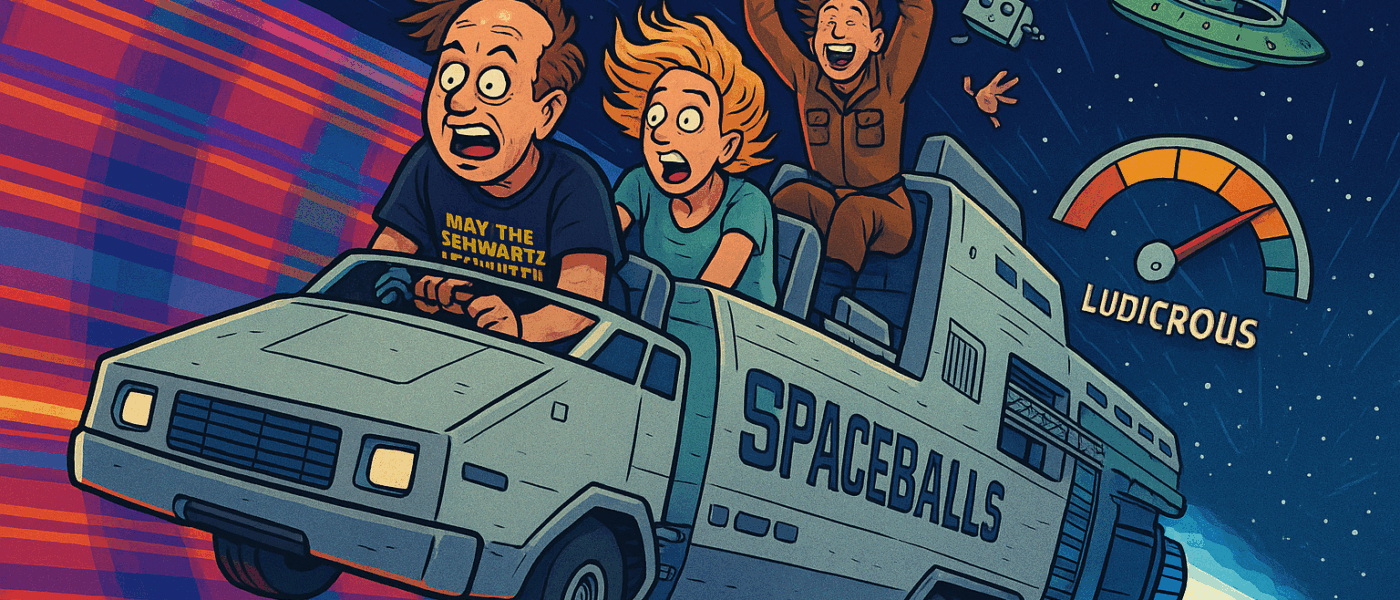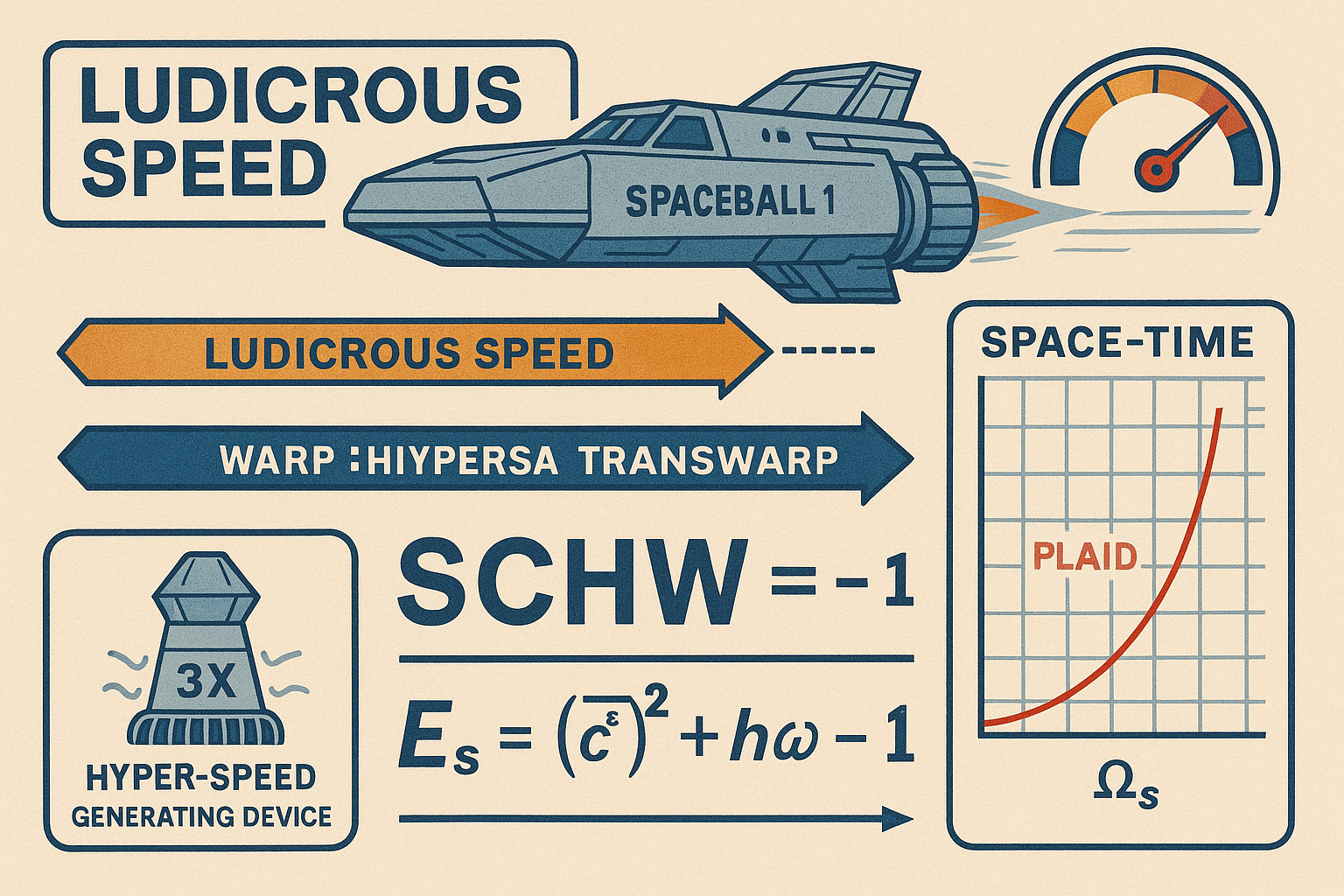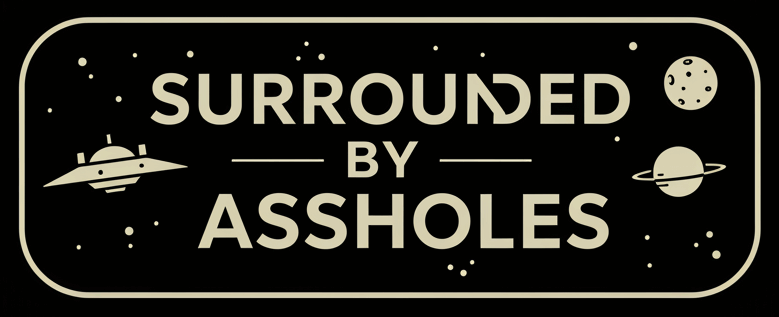Ludicrous Speed: Breaking the Space-Time Fabric with Style

Spaceballs didn’t just make fun of faster-than-light travel—it redefined it. “Ludicrous Speed” wasn’t just fast. It wasn’t just impractical. It was so fast, it broke the aesthetic barrier of space-time itself… and made it go plaid.
But what if we stopped laughing… and started designing?
When Light Speed is Too Slow
- Ludicrous Speed makes Star Wars Hyperspace and Star Trek Warp 10 look like grandma’s station wagon.
- It’s powered by a theoretical combination of quantum fudge, tachyon injectors, and ego-driven thrusters.
- At Ludicrous Speed, space-time doesn’t just bend—it’s tie-dyed.
Faster Than Hyperspace, Beyond Warp 10
To appreciate just how excessive Ludicrous Speed truly is, it helps to compare it with the more “reasonable” methods of travel from other sci-fi franchises. In Star Wars, hyperspace allows ships to travel faster than light by entering a parallel dimension, covering vast galactic distances in what seems like hours. Exactly how fast depends on plot convenience and whether or not the Falcon is having engine trouble. On the Star Trek side, Warp 10 is a theoretical construct where a ship would occupy every point in the universe simultaneously—essentially infinite speed. This sounds impressive until you remember that hitting Warp 10 turns you into a salamander. Unfortunate.
Then there’s Ludicrous Speed. While no exact figures are given in the movie, visual evidence suggests it is clearly faster than infinite speed, because when Spaceball One jumps to it, the universe’s visual fabric doesn’t just stretch—it becomes plaid. That’s not just velocity. That’s velocity with confidence. No other franchise boasts a travel method so fast it comes with its own fashion pattern. You don’t get plaid at Warp 10. That’s just science.
Engineering the Impossible: Building a Ludicrous Drive
While conventional propulsion systems rely on Newtonian mechanics or general relativity, the Ludicrous Drive demands an entirely new engineering paradigm: Ego-Driven Propulsion Dynamics (EDPD).
At the heart of the system is the Overcompensator Coil Array, a thrumming network of oscillating magnetic chambers designed to redirect spatial inertia into a state of pure denial. These coils don’t just reject known laws of physics—they file restraining orders against them. Regulating the entire system is the Chrono-Plausibility Stabilizer, which ensures the ship doesn’t arrive at its destination before it leaves—a common hazard when exceeding the arrogance threshold of velocity. This device pulses at 88.8 Hz, a frequency discovered accidentally when a lab intern played a disco playlist near an experimental core reactor.
Thermal regulation is handled by a grid of Hyperfrictive Vent Ducts, designed to rapidly dissipate the heat generated by narrative acceleration drag. These ducts are coated with a proprietary material known as Icarinite, which melts at precisely the same temperature it’s supposed to resist.
And finally, no Ludicrous Drive would be complete without the Perceptual Inertia Canceller, a cockpit-mounted feedback loop that convinces both the crew and the surrounding universe that everything is completely normal—despite the fact that space outside has just gone plaid.
Together, these technologies form a symphony of the theoretical, delicately balanced on the edge of scientific possibility and comedic intent. And yet, somehow, it works. Probably.

Why Spaceball One Is the Ideal Ludicrous Vessel
No ordinary starship could survive a journey at Ludicrous Speed. Enter Spaceball One, the galaxy’s most structurally confused vessel. Part battleship, part cruise liner, part galactic cleaning service, it’s the only ship in fiction ridiculous enough to make the leap without imploding. The ship’s awkwardly elongated frame might actually serve a purpose; its wide, flat surface could (in a completely fictional theory) help distribute inertial forces across a compressed meta-space field…think about it.
Its onboard vacuum system isn’t just for cleaning up metaphorical messes—it’s also perfect for sucking up rogue particles as it punches through layers of space-time. The Schwartz Conduction Panels, added late in the design phase by an underpaid intern, help redirect narrative inconsistencies into stable wormholes. It’s not a ship built for practicality. It’s a ship built for sheer, narrative-driven momentum.
What It Feels Like to Go Ludicrous
Traveling at Ludicrous Speed isn’t just fast—it’s an experience. Time doesn’t just bend; it gets emotional. One moment you’re sipping a cup of coffee, the next you’re emotionally reconnecting with your childhood pet—who somehow shows up, wearing a spacesuit, offering life advice in Morse code. Stars don’t just streak by—they dance. They groove. And the colors? You haven’t seen plaid until you’ve hit Ludicrous Speed.
Everything around you becomes distorted, but not in the terrifying, crushing way of black holes. Time travel, quantum entanglement, and psychological therapy are all included—sometimes simultaneously.
So what does it look like when a vessel truly hits Ludicrous Speed? It looks like the laws of physics took a lunch break, and comedy took the wheel.

